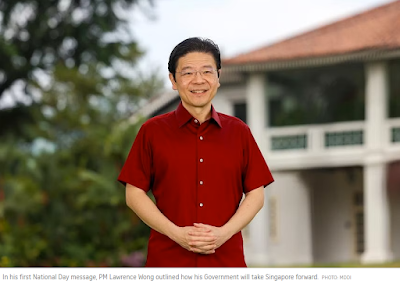SkillsFuture Jobseeker Support scheme to benefit around 60,000 Singapore residents per year
Eligible involuntarily unemployed persons will receive up to $6,000 over six months
By Tay Hong Yi, The Straits Times, 28 Aug 2024
About 60,000 jobless Singapore residents will stand to benefit each year from a new job seeker support scheme to be rolled out next April.
To be eligible for the SkillsFuture Jobseeker Support, they must have earned $5,000 or less a month on average for the duration of their previous employment within the last 12 months. They also cannot live in a property with an annual value of more than $25,000.
The annual value of property is the estimated gross annual rent if it were to be rented out, according to the Inland Revenue Authority of Singapore.
They will receive up to $6,000 over six months, starting with $1,500 in the first month, and subsequently tapering down, if they meet the requirements.
However, the monthly payouts are capped at an individual’s previous-drawn monthly salary, and they stop once the jobless person finds work.
Those who have received payouts will not be able to make another application within three years of their last scheme payout, but there is otherwise no limit on how many times they can be covered by this scheme.
They must also have worked for at least six out of the 12 months preceding their application for the scheme, which will be implemented by Workforce Singapore (WSG).
Manpower Minister Tan See Leng unveiled the scheme’s eligibility criteria during a visit to the Devan Nair Institute for Employment and Employability in Jurong East on Aug 27 to witness a career coaching class.
This follows Prime Minister Lawrence Wong’s announcement on the maximum duration and payout of the scheme during his maiden National Day Rally speech on Aug 18.
More than 60 per cent of those who are involuntarily unemployed, which broadly refers to those who did not initiate their termination from previous employment, are set to qualify. They include those who are retrenched or dismissed, or whose companies have gone bust.
The scheme will be open to Singaporeans aged 21 and above at launch, before being extended to permanent residents aged 21 and above from the first quarter of 2026.
The Government will also provide a one-off concession to Singaporean job seekers who lost their jobs on or after April 1, 2024, and remain so even when the scheme kicks off in April 2025, despite them having not worked for at least six of the 12 months before their application.
Fewer than 2,000 people are expected to fall under the concession, a Ministry of Manpower (MOM) spokeswoman told reporters at a media briefing on Aug 27.
She also said the scheme, which will be reviewed regularly, is expected to cost about $200 million a year.
The $5,000 wage threshold, at slightly above the median gross monthly income of $4,550, was set to ensure that lower- and middle-income workers would be covered, she added.
Asked if the cap on monthly payouts to an individual’s previous-drawn monthly salary would mean job seekers previously earning less than the payouts have less support despite being more in need, she said the cap is meant to ensure that workers will not try to get involuntarily unemployed to earn more than their pay.
“It’s very important to come back to the principle that we want people to bounce back into employment... So, in order to do that, what’s most important is that the person holds on to the job, and the payout quantums do need to be designed in such a way as to incentivise this,” she added.
MOM and WSG said in a joint statement issued on Aug 27 that the scheme comes with support for an individual’s job search beyond the payouts, and complements other training and social support schemes.
“The payout quantum is not sized to meet the needs of households facing financial distress as a result of a household member becoming involuntarily unemployed, as (SkillsFuture Jobseeker Support) is not a social assistance scheme,” they said.
This means job seekers can still benefit from social support schemes such as ComCare Short-to-Medium-Term Assistance (SMTA).
ComCare SMTA provides temporary financial aid and other forms of help to tide recipients over tough times as they are looking for a job or are ill, among other reasons.
MOM and WSG said those who undertake reskilling or upskilling can still receive additional training allowances that they qualify for separately, such as the SkillsFuture Mid-Career Training Allowance.
Those receiving payouts will also need to demonstrate that they are actively seeking a job, such as through submitting job applications, attending career coaching, or participating in eligible training courses.
Asked to elaborate on how someone can show he is doing so, a WSG spokesman said: “I think these are details that we are still working on, but very broadly speaking, we do expect applicants to submit some form of documentation, and we will check this documentation.”
He added that more details will be shared closer to the launch date.
In response to a question from The Straits Times on whether eligible job seekers would be invited to apply for the scheme, the WSG spokesman said the agency already reaches out to employers who cut jobs to tell them about the support that affected workers can tap, which would include the new scheme moving forward.
In his speech, Dr Tan said the scheme marks a paradigm shift for the Government, in providing interim support to others who may face financial pressures when involuntarily unemployed, beyond the most vulnerable in society.











